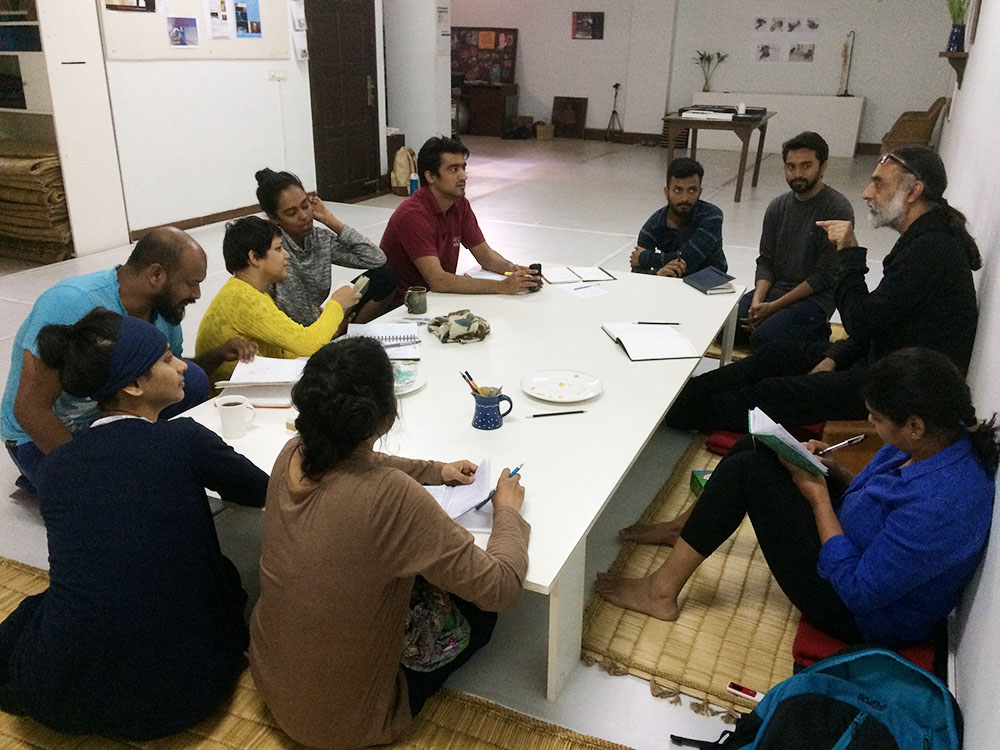Having been a practioner of yoga and dance (primarily, Bharatanatyam) for many years, it has become clear to me that embodied practice is not alone about “doing” or “mastering”, as it has been made out to be over the last century and a half, but it is actually a means of methodically distilling the materiality of the body, of simultaneously “observing” that process of distillation, and then, most importantly, of “seeing” from the vantage point of that distilled body. In other words, embodied practice is a process of converting a) the body into a prism, a lens, to “see”, and b) the process of self-observation into a means of seeing with relative clarity. The body then becomes a sensory instrument of clarity or pragnya. Practice without critique is incomplete. Embodied practice at Abhyas includes a critical engagement with reconstructed-histories of Indian dance and yoga, the historiography of Indian philosophy, as well as the “ideas” of the body. Therefore, it is impossible to effectively engage with the body without simultaneously critically-contending with the multitude of histories as well as thought processes that have all worked in tandem to bring about the annulment of the body. It is for this purpose that we are necessarily pairing embodied practice, at Abhyas, with the study of reconstructed-histories, historiography of Indian philosophy, and critical theory. Our aim is to bring to the fore materialist or realist philosophies that bear direct influence on our embodied practices such as yoga and dance, and which have been historically side-lined and obliterated or reimagined and appropriated by idealist schools of thought. We hope to carry forth this project of twining theory with practice through lectures, publications, study-groups and courses. Navtej Johar

However, historically, the body has been so dismissed by both religious doctrine as well as Cartesian thought which categorically privileges mind over body, that the body has become badly discredited as a reliable source of perception.
E-mail : abhyastrust@gmail.com
Copyright © 2020-21, Abhyas Trust, New Delhi (INDIA) Site Designed & Maintained by mark design
Copyright © 2020-21, Abhyas Trust, New Delhi (INDIA) Site Designed & Maintained by mark design
